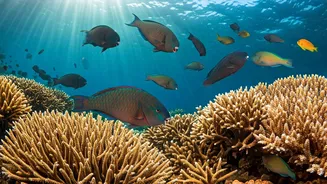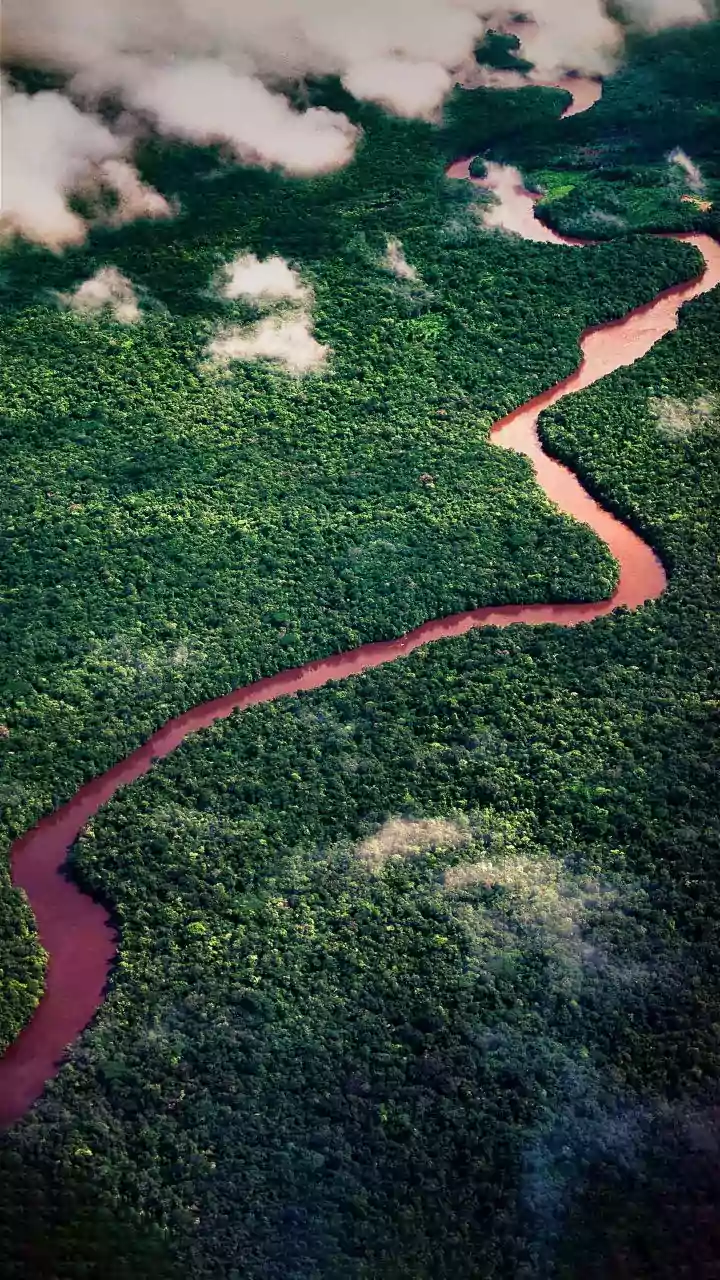Coral Reef Ecosystems
Coral reefs, often called the 'rainforests of the sea,' are among the most biodiverse ecosystems on Earth. These underwater havens are home to a myriad
of marine life, offering shelter and sustenance to countless species. They are also crucial for coastal protection, buffering shorelines from storms and erosion. The health of coral reefs is increasingly threatened by various factors, including climate change, pollution, and destructive fishing practices. The delicate balance within these ecosystems makes them particularly vulnerable to disturbances, highlighting the need for conservation efforts. Understanding the intricate relationships within coral reefs is the first step towards preserving these precious environments for future generations. Protecting these ecosystems is vital, not just for the marine life that calls them home, but also for the millions of people who depend on them for food, livelihoods, and coastal protection. These underwater cities are a testament to nature's complexity and beauty, worth saving for their intrinsic value and their importance to our planet.
The Role of Parrotfish
Parrotfish are integral to the health of coral reefs, acting as 'bioeroders' and playing a significant role in reef maintenance. These fish possess powerful beaks, which they use to scrape algae and dead coral from the reef surface. As they feed, they consume the coral skeletons, and later excrete the undigested coral as fine sand. This process helps to keep the reefs clean, preventing the overgrowth of algae that can suffocate corals. Moreover, by removing dead coral, parrotfish create space for new coral growth. This crucial activity supports the overall health and resilience of the reef. The continuous grazing by parrotfish also helps to maintain a balanced ecosystem where various species can thrive. Their presence and activity are indicators of a healthy reef, and their absence can lead to a decline in reef health. The impact of parrotfish extends beyond mere cleaning; they are active architects of the reef's structure and form. Their activities contribute significantly to the dynamic nature of coral reefs, facilitating growth and regeneration.
Feeding Habits Detailed
The feeding habits of parrotfish are quite fascinating, contributing significantly to the health and structural integrity of coral reefs. They utilize their beak-like mouths to graze on algae and dead coral. The strong jaws and pharyngeal teeth of the parrotfish grind the coral into smaller particles during their feeding. They consume everything from the surface of the coral and this includes the algae and living coral. The ingested coral is then processed, and the digestible parts are absorbed. The indigestible material, including the coral skeleton, is excreted as sand. A single parrotfish can generate hundreds of pounds of sand per year. The sand produced by parrotfish contributes to the reef's physical structure, providing a base for new coral growth. The constant grazing by parrotfish also helps to control the growth of algae, which, if left unchecked, can smother corals. This continuous process promotes a healthy reef environment, creating conditions that favor coral survival and expansion. The activity of parrotfish is essential to the reef ecosystem's balance, supporting a thriving and diverse marine habitat.
Impact on Reefs
Parrotfish have a profound impact on the health and resilience of coral reefs around the world. Their grazing action keeps reefs clean of algae, which would otherwise compete with coral for space and resources. The sand produced by parrotfish contributes to the reef's structure, acting as a foundation for new coral growth. This continual process helps to maintain the delicate balance of the reef ecosystem. Moreover, the presence of parrotfish promotes biodiversity, providing habitats for a wide range of marine organisms. The removal of parrotfish from an ecosystem can lead to negative consequences, including algae overgrowth, coral decline, and a decrease in overall reef health. In areas where parrotfish populations have been depleted, reefs often become less resilient to stressors, such as climate change and pollution. Conservation efforts focused on protecting parrotfish are crucial for ensuring the long-term health and survival of coral reefs. The impact of parrotfish extends beyond their immediate feeding habits, influencing the entire structure and function of the reef ecosystem, providing a vital service to these underwater environments.
Conservation Importance
The conservation of parrotfish is paramount to safeguarding the health of coral reefs worldwide. Due to overfishing and habitat degradation, parrotfish populations face various threats, highlighting the urgent need for protective measures. Implementing fishing regulations that limit or ban the capture of parrotfish is a crucial first step. Establishing marine protected areas (MPAs) also provides safe havens for parrotfish, allowing them to thrive and contribute to reef health. Efforts to reduce pollution, which can harm coral reefs and affect parrotfish habitats, are equally important. Educating local communities about the significance of parrotfish and their role in reef ecosystems can encourage sustainable practices. Community involvement is essential in fostering a culture of conservation. Furthermore, climate change poses a significant threat to coral reefs, emphasizing the importance of broader efforts to mitigate its effects. By combining these conservation strategies, it is possible to create a sustainable future for parrotfish and the coral reefs they help protect. Their conservation will help sustain the beauty and biodiversity of these crucial marine ecosystems.











